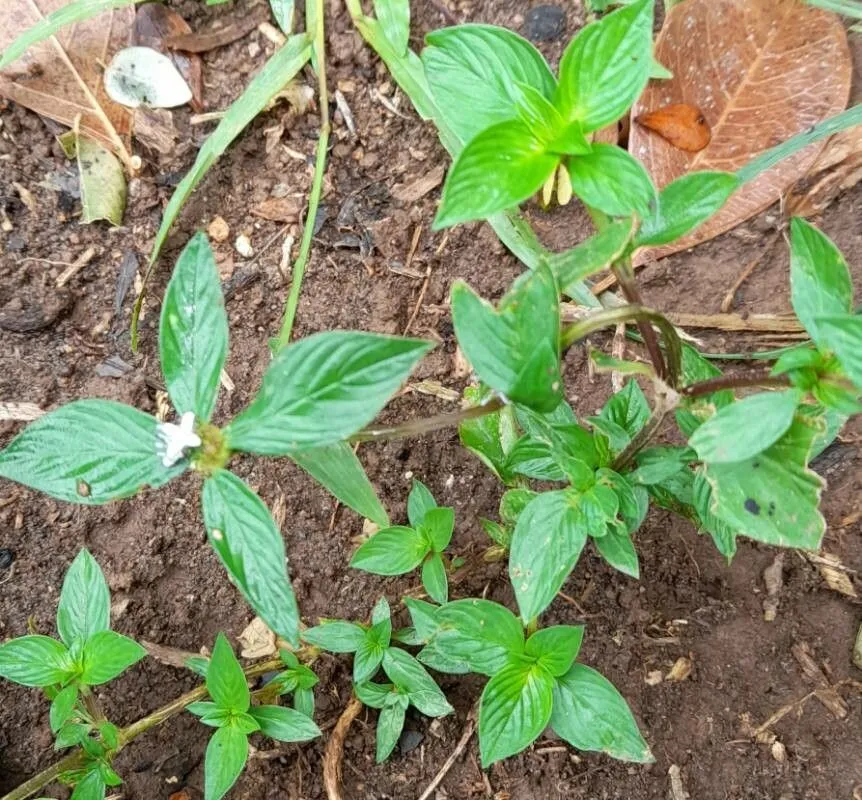
Author: Lam.
Bibliography: Tabl. encycl. 1:273. 1792
Year: 1792
Status: accepted
Rank: species
Genus: Spermacoce
Vegetable: False
Observations: Trop. & Subtrop. America
Woodland false buttonweed, scientifically named Spermacoce remota, is a notable species belonging to the Rubiaceae family. This plant is prevalent across tropical and subtropical regions of the Americas, where it thrives in varied environmental conditions.
Description and Characteristics:
Spermacoce remota distinguishes itself with its compact growth habit and distinctive floral arrangement. The plant often exhibits a low, branched, and spreading structure, facilitating its role in ground cover in its native habitats. Its leaves are typically simple, opposite, and may exhibit a glossy texture, contributing to the plant’s hardy nature and ability to adapt to different light conditions—from full sun to partial shade.
The flowering pattern of woodland false buttonweed is particularly intriguing. The small, tubular flowers are usually white and emerge in clusters, resembling button-like formations—hence the common name. These floral clusters make the plant easily recognizable and also attract various pollinators, which play a crucial role in its reproductive cycle.
Ecological Role:
In its natural environment, Spermacoce remota plays a multifaceted role. It acts as an excellent ground cover, preventing soil erosion and contributing to the stabilization of the ecosystem. Moreover, the plant is a source of nectar and pollen for insects, thus leaning towards the enhancement of local biodiversity. Its prevalence in tropical and subtropical climates allows it to form part of the vegetative understory, thereby supporting the health of larger vegetative communities.
Cultural and Practical Uses:
Although not frequently noted for its ornamental appeal in the same way as showier garden plants, woodland false buttonweed can be utilized in landscaping for its ground cover properties and resilience. However, it is essential to manage its spread, as it can become invasive in certain conditions due to its robust growth and self-propagation abilities.
Historical Context and Classification:
The classification of Spermacoce remota dates back to 1792, documented in the “Tabl. encycl.” by the author Lam. Its identification and categorization have helped botanists to understand and appreciate the diversity within the Rubiaceae family, highlighting the plant’s distinct characteristics and its adaptability across different environments in the Americas.
In conclusion, the woodland false buttonweed stands out as a resilient and ecologically important plant within the Rubiaceae family. Its adaptive features and role within its native habitats underscore its significance in maintaining ecological balance and supporting biodiversity across tropical and subtropical regions.
Eng: woodland false buttonweed, button weed
En: Woodland False Buttonweed, Button weed
Zh: 光叶丰花草
Pt-br: Poaia
: Woodland false buttonweed
Taken Apr 2, 2022 by Emanuele Santarelli (cc-by-sa)
Taken Jun 30, 2022 by Trap Hers (cc-by-sa)
Taken Apr 22, 2020 by Sébastien TRASBOT (cc-by-sa)
Taken Jun 16, 2022 by Trap Hers (cc-by-sa)
Taken Oct 13, 2022 by Blue Bottle (cc-by-sa)
Taken Jul 18, 2021 by erick cuevas (cc-by-sa)
Taken Sep 13, 2014 by Tela Botanica − Louise BOULANGEAT (cc-by-sa)
Taken Jan 13, 2021 by zuñiga Eduardo (cc-by-sa)
Taken Mar 12, 2021 by fik fikri (cc-by-sa)
Taken Mar 12, 2021 by fik fikri (cc-by-sa)
Taken Jul 18, 2021 by erick cuevas (cc-by-sa)
Taken Dec 14, 2021 by New Gi (cc-by-sa)
Taken Apr 22, 2020 by Sébastien TRASBOT (cc-by-sa)
Taken Apr 2, 2022 by Emanuele Santarelli (cc-by-sa)
Taken Feb 22, 2016 by OTS – Oviedo-Brenes, Federico (cc-by-nc-sa)
Taken Jul 29, 2010 by OTS – Oviedo-Brenes, Federico (cc-by-nc-sa)
Taken Jul 29, 2010 by OTS – Oviedo-Brenes, Federico (cc-by-nc-sa)
Taken Feb 22, 2016 by OTS – Oviedo-Brenes, Federico (cc-by-nc-sa)
Taken Jul 29, 2010 by OTS – Oviedo-Brenes, Federico (cc-by-nc-sa)
© copyright of the Board of Trustees of the Royal Botanic Gardens, Kew.
© copyright of the Board of Trustees of the Royal Botanic Gardens, Kew.
© copyright of the Board of Trustees of the Royal Botanic Gardens, Kew.
Family: Myrtaceae Author: (F.Muell.) K.D.Hill & L.A.S.Johnson Bibliography: Telopea 6: 402 (1995) Year: 1995 Status:…
Family: Rubiaceae Author: Pierre ex A.Froehner Bibliography: Notizbl. Bot. Gart. Berlin-Dahlem 1: 237 (1897) Year:…
Family: Sapindaceae Author: Koidz. Bibliography: J. Coll. Sci. Imp. Univ. Tokyo 32(1): 38 (1911) Year:…
Family: Asteraceae Author: A.Gray Bibliography: Pacif. Railr. Rep.: 107 (1857) Year: 1857 Status: accepted Rank:…
Family: Fabaceae Author: Medik. Bibliography: Vorles. Churpfälz. Phys.-Ökon. Ges. 2: 398 (1787) Year: 1787 Status:…
Family: Aspleniaceae Author: (Cav.) Alston Bibliography: Bull. Misc. Inform. Kew 1932: 309 (1932) Year: 1932…